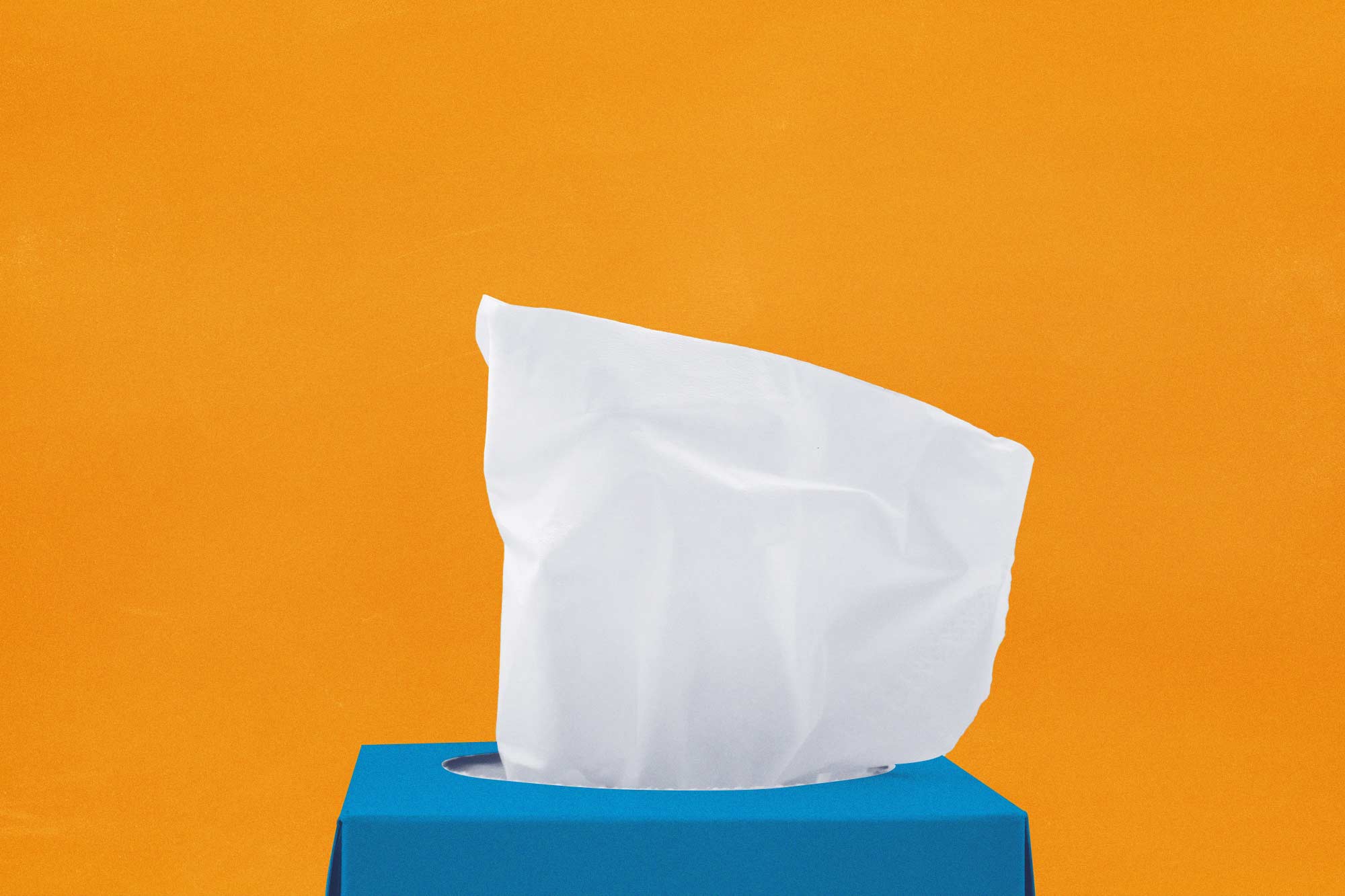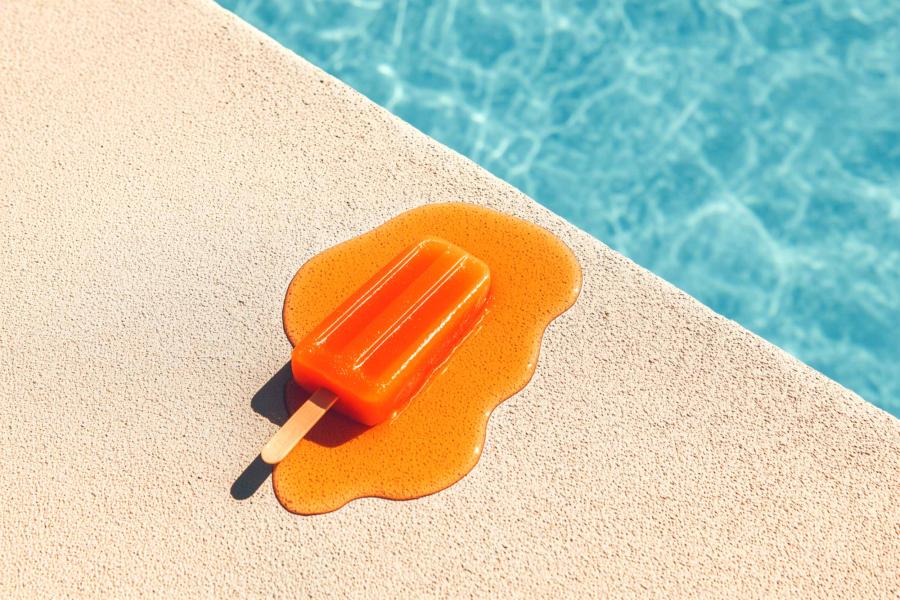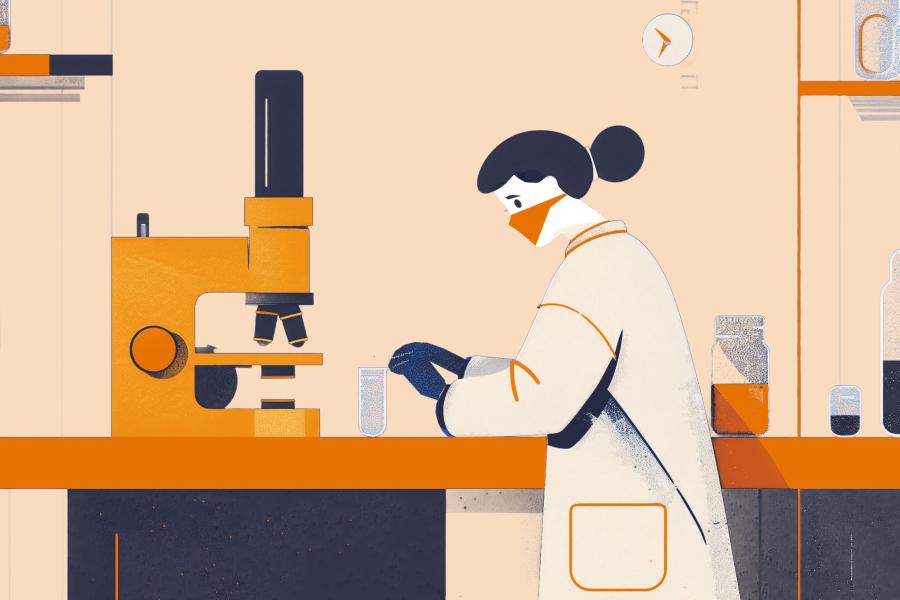Don’t suffer in silence. This is one of Dr. Michael Nelson’s main pieces of advice for people who have been hit hard by allergies this spring.
Nelson, UVA Health’s chief for the Division of Allergy and Immunology, says there are many options available now – with even better ones on the way in the future – that can improve your quality of life.
“Your primary care and student health physicians are standing by to assist you with personalized diagnostic and treatment options,” Nelson said.
UVA Today caught up with Nelson – who also serves as the president of the American Board of Allergy and Immunology – to learn more about what people of all ages can do in their battle against allergies.
Q. Anecdotally, there seem to be more people than usual this spring who are suffering from allergies here in Charlottesville. Is there any data – perhaps pollen count numbers – that can say how this season compares to past years?
A. Sophisticated observational and phenological models have been developed to predict the start and burden of pollen seasons with increasing accuracy. Thus, there is a general suspicion that this and future pollen seasons will indeed be more severe based on a multiyear trend toward longer and higher count pollen seasons, possibly due to the effects of climate change.
Allergen immunotherapy is one of Dr. Michael Nelson’s specialties. (UVA Health photo)
In a very recent study published in March 2022 in Nature Communications by Drs. Yingxiao Zhang and Allison Steiner addressing the impact of climate change on pollen seasons, investigators used historical data and future meteorological predictions to forecast what pollen seasons will look like at the end of the century (2081-2100). They found that future pollen seasons will start up to 40 days earlier, last up to 19 days longer and produce up to double the amount of pollen per species per year, subject to rain keeping down total counts.
In the Charlottesville area, spring brings warm weather and some of our highest total peak pollen counts compared to other times in the year. Tree season extends typically from late February through mid-late May, just as grass pollens are taking charge for the summer. This year, significant tree pollen counts were recorded in mid-February, and in the past as early as late January.
In preparation for this article, I contacted Sue Kosisky at the U.S. Army Centralized Allergen Extract Laboratory – who leads our region’s closest National Allergy Bureau certified counting station – for a comparison of this year’s counts to prior years. The brief warm spell in midwinter did lead to huge peaks in cedar, cypress and juniper tree pollen in mid-March this year, contributing to this year’s severe flare of allergies among those sensitized in the community.
However, our overall counts are turning out to be in line with previous years due to subsequent cold spells and rain we’ve experienced over the last several weeks. We will see what grass season brings in May through August, only to be followed by weed and mold season in the fall.
Q. We tend to just assume pollen is the main contributing factor to these spring allergies, but are there any other things that play a role that people should be cognizant of?
A. Great question. I can’t tell you how many times I evaluate patients who are sure they “only have seasonal allergies,” when in fact after conducting allergy testing we discover that they have been sensitized to allergens that are present yearlong, most commonly dust mites and animal danders. Once started on appropriate treatment and avoidance measures, they suddenly realize that they have been miserable all year long and were only noticing the exacerbations that occurred during seasonal pollen seasons.
In addition, many are afflicted with not only allergic rhinitis, but also have an element of nonallergic rhinitis where they are more sensitive to irritants such as heavy particulates, fumes and barometric pressure changes. As spring comes and we increase our outdoor exposure to dust, dirt and even heavy pollens that don’t cause allergies, we see flares of this nonallergic component of their suffering.
Q. For allergy sufferers, is there any respite on the horizon? When does this particularly tough stretch subside?
A. For those sensitive to tree pollens, the end is near. We are winding down tree pollen season, but watch out for grass just now kicking in. For those allergic to trees, grasses and weeds in this area, they can be symptomatic literally from February through the first freeze in early winter. Rain is not only great for the greenery of Charlottesville; it also helps keep down the pollen counts.
Q. Do you have any tips for allergy sufferers that may make their situations more bearable?
A. Talk with your primary care doctor and allergy specialist. Find out what you are allergic to so that you can predict when symptoms will occur and take measures to minimize your exposure to allergens. Simple things like taking the right medications at the right time and wearing a mask to cut the grass, if you are allergic, can vastly improve your quality of life.
There are great prescription and over-the-counter medications to control symptoms, but they work best when taken in advance of exposure and regularly as prescribed during peak seasons. Seeking longer term treatments that give you a chance for a cure (with allergy shots and tablets taken under the tongue) for a few allergens should also be considered.
Q. Any specific suggestions for children, who, during school recesses, are often subjected to a lot of pollen?
A. We’ve come a long way from taking exclusively Benadryl, as needed, for seasonal allergies. There are nasal sprays and oral antihistamines approved down to 6 months of age that are non- or low-sedating and can definitely control symptoms, and not slow them down for their school activities.
Our goal of allergy treatment for patients of all ages is to always find a personalized management plan that teaches them to live life to their fullest without allergies standing in the way.
Q. Is there a way to know if what somebody is experiencing in terms of sneezing, coughing and a runny nose is, in fact, allergies and not COVID-19? Any telltale signs?
A. Unfortunately, the overlap of symptoms and ability to distinguish a sneeze and cough due to allergies versus COVID-19 is tough. Fever is certainly a hallmark of COVID-19, but it is not commonly seen in seasonal allergies. However, some patients who are severely allergic to mountain cedar trees sometimes sense low grade fevers and what is called “cedar fever” due to the storm of allergic mediators released with heavy pollen exposure, particularly in southwest Texas. Loss of smell is seen in a subset of COVID-19 patients, sometimes seen in patients with severe nasal polyp disease, and much less commonly in pure allergic rhinitis.
Q. If somebody has lived with allergies long enough, is it possible that eventually they just get used to them and their body learns how to fight them off better?
A. We do see patients who become less severe or “lose” their allergies with time. This probably happens more commonly with allergens that are present all year long such as pet dander. The mechanism underlying the natural loss of allergic sensitization is not well studied. It is much more beneficial to more intentionally desensitize patients using allergy shots and tablets, where we have the greatest evidence for tolerance induction through the development of protective immune responses to allergen exposure.
Q. One of your specialties is allergen immunotherapy (a treatment for environmental allergies that involves exposing people to larger and larger amounts of allergen in an attempt to change the immune system’s response). Have there been any advancements in this area over the last 10 years, and are there any promising advancements on the horizon?
A. I had the opportunity to participate in the development of our last comprehensive national practice parameters for allergen immunotherapy and sublingual immunotherapy, devoted to help standardize the practice using evidenced-based medicine principles to ensure treatment with the most effective doses, and safe administration that minimizes risks to patients.
I also had the great fortune to serve as an FDA advisory committee chair that contributed to the approval of new sublingual tablets to grass, ragweed and dust mites. This is a new treat-yourself-at-home option, compared to allergy shots performed in a doctor’s office for patients with their symptoms dominated by these allergens. Tablets for additional allergens are in development, and in some cases already approved overseas.
Finally, just last week I moderated an allergen immunotherapy discussion by national thought leaders in Washington, D.C., who are seeking ways to improve patient and provider awareness. We also touched on the tremendous access gap for the underserved who aren’t often afforded the opportunity to receive specialized diagnostic and treatment care. I am convinced that the future is bright for bringing new treatment options to patients and providing cures that go far beyond symptomatic treatment.
Media Contact
Manager of Strategic Communications University of Virginia Licensing & Ventures Group
wdr4d@virginia.edu 434-982-3791
Article Information
June 30, 2025






